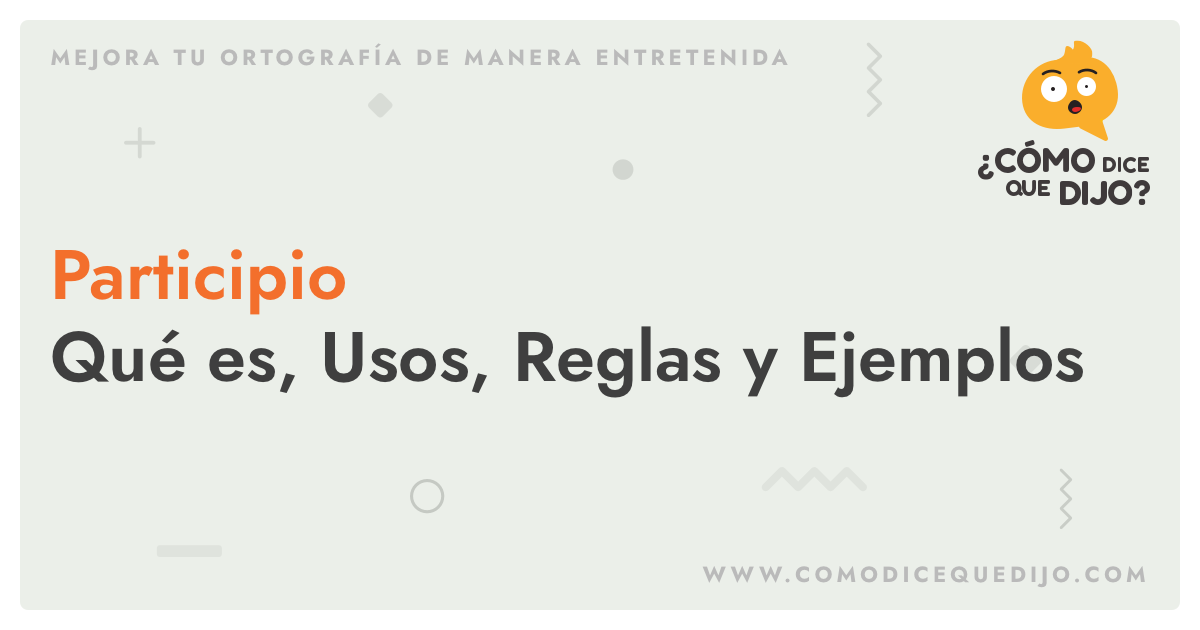
Nei seguenti esempi, l'Evento A è l'evento antecedente o quello che si è verificato per prima, mentre l'Evento B è l'evento più recente o il secondo a verificarsi: Evento A Non è importante quale evento viene riportato per primo nella frase: il tempo del verbo chiarisce cosa è successo prima.

Si usa per chiarire che un evento si è verificato prima di un altro evento nel passato. It is important to note that speakers in Spain are more likely to use the pretérito perfecto in instances when many other Spanish speakers would use the pretérito indefinido.Il past perfect definisce un tempo precedente a un altro tempo nel passato.

Maribel has planned her trip to Mallorca.Īgain, an action in the past – planning a trip – results in influencing the future: Maribel will go on a trip to Mallorca. Maribel ha planeado su viaje para Mallorca. Here, an action in the past – arrange to meet – has an influence on the future. Next week, I have arranged to meet with Albert.
MODO PARTICIPIO MOVIE
I have seen the movie twice already, but that doesn’t mean I won’t see it again at some point in my life. We use pretérito perfecto because there is the possibility that we can try it in the future as our lives are not yet over. We are describing something that we have never experienced (in our lives). We use pretérito perfecto because it is a completed action that has happened in a time that is still considered the present – this week. This week, my parents have called me 3 times. We use pretérito perfecto because we are describing an action that has started in the past and continues until the present Sara continues to live in London.Įsta semana mis padres me han llamado 3 veces.

Some irregular past participles, participios pasadosīelow are some examples of the perfect tense in use. For example, if the past participle of cubrir is cubierto, then the past participle of descubrir is descubierto. You can also use irregular endings to find out how similar verbs would be conjugated. Once you know them, they are easy enough to apply because only the verb haber needs to be changed according to each pronoun ( yo, tú, él etc.). Lucky for you, there are only a handful of irregular verbs for the participio pasado. Irregular past participles ( participios pasados) Good news! Estar, ser, and ir are all regular conjugations: estado, sido, and ido. When there is a vowel before –ido, we must add an accent to the –i to make sure that there are two syllables pronounced in the word. Saludar => saludado Verbs ending in –er and –ir The participio pasado can be made easily as well: Verbs ending in –AR To form a verb in the present perfect tense in Spanish, we use two elements: the verb haber conjugated in the simple present + the participio pasadoīelow is the table of the present conjugation of the verb haber:

hace 5 minutos, poco, un rato, un momento ,1 hora, 2 horas.este/esta semana, mes, año, tarde, verano, primavera, invierno, otoño, fin de semana.If you see these time words, you can usually use the pretérito perfecto: experiences in your life that have (or have not) happened.completed actions that influence the present or future.actions in the past that started in the past and are still continuing or seen as the present.actions in the past that have been recently completed.The pretérito perfecto is similar in nature to the English present perfect tense. Read on to learn the uses, conjugations and see some examples. This tense will help you speak about your experiences and events that have happened in the recent past. The pretérito perfecto in Spanish is one of the easier tenses to learn because of its simple conjugation and few irregular verbs.


 0 kommentar(er)
0 kommentar(er)
